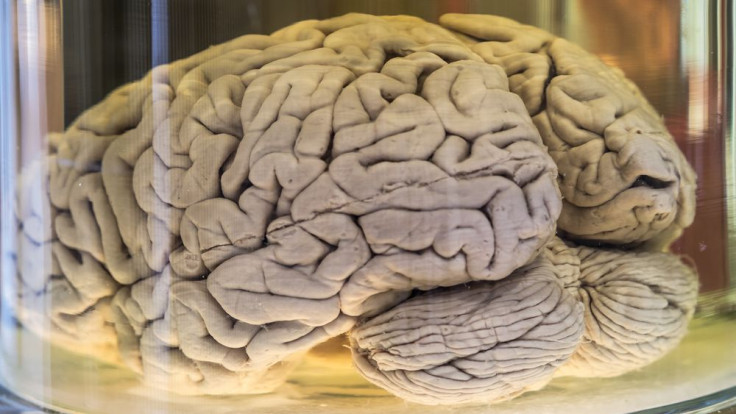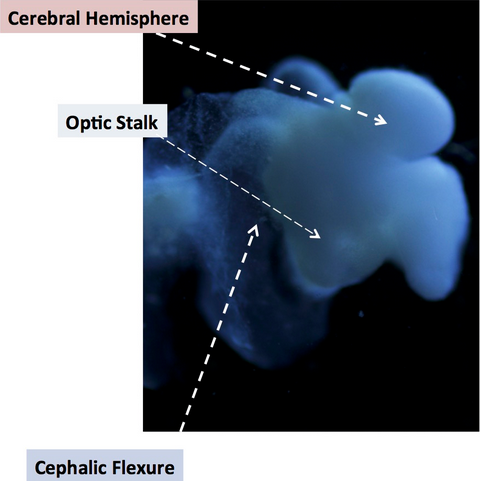Brain In A Jar: Scientists Claim To Have Grown A Human Brain Using Stem Cells For Research Purposes

Scientists at Ohio State University have successfully grown a near-exact replica of a five-week-old fetus’s brain. The brain is meant to allow researchers to better understand the underpinning causes of developmental diseases, such as Alzheimer’s disease and Parkinson’s, and could pave the way for the most personalized medical treatment ever seen.
Tiny, Yet Anatomically Correct
Although it’s only about the size of a pencil eraser, Ohio State’s brain model is complete with 99 percent of the cells that would exist in a human fetus, making it the most fully formed brain model ever engineered. It’s even complete with its own spinal cord, signaling circuitry, and the beginnings of an eye. According to a report presented by lead researcher Dr. Rene Anand on Tuesday at the 2015 Military Health System Research Symposium, the brain was engineered from adult skin cells manipulated to become pluripotent stem cells, which are capable of growing into any type of body tissue. This same technique has previously been used to grow other body parts, such as human muscles and stomachs, but attempts to grow complete brains have been less successful.
“Once a cell is in that pluripotent state, it can become any organ — if you know what to do to support it to become that organ,” Anand said in a statement. “The brain has been the holy grail because of its enormous complexity compared to any other organ.”

Anand and his colleague Susan McKay have not released the specifics of how they were able manipulate the stem cells to become brain cells, but they did reveal that once the brain cells were formed, they were allowed to mature in an environment that mirrored “what’s going on in utero to support the brain.”
In total, it took about 15 weeks for the brain model to mature into something that could be compared to the brain of a 5-week-old fetus.The work is not finished, though, because the team plans to continue growing the brain until it resembles that of a 12-week-old fetus. The brain model would need a network of blood vessels and an artificial heart to develop past 12 weeks, The Guardian reported.
So Much Potential
The therapeutic potential for this brain model would be more profound and far-reaching than even the most accurate animal models and could transform the direction of personalized medicine altogether. The brains are essentially cloned from the brains of their DNA donors, meaning that those with neurological diseases would be able to understand the exact effects of a potential treatment without putting themselves or others at risk.
“We can look at the expression of every gene in the human genome at every step of the development process and see how they change with different toxins. Maybe then we’ll be able to say ‘holy cow, this one isn’t good for you,” Anand told The Guardian.
Figuring out a way to develop the brain past the 12-week mark could open the door to even more medicinal potential. “If we let it go to 16 or 20 weeks, that might complete it, filling in that one percent of missing genes. We don’t know yet,” Anand said.
Although some might question whether cloning human brains crosses ethical boundaries, Anand explained that because the brains aren’t developed enough to have conscious thought, there’s no ethical dilemma. “We don’t have any sensory stimuli entering the brain. This brain is not thinking in any way,” he said. Because of this, the brains may provide a more ethical way to test experimental drugs, as it would eliminate the need for animals in research and may even be used to test for safety and efficacy in clinical trials without humans.
Source: Anand R, McKay S.The Military Health System Research Symposium. 2015.



























